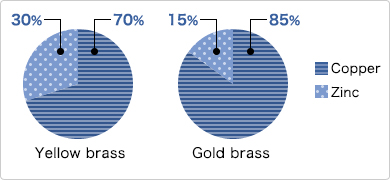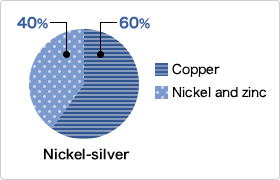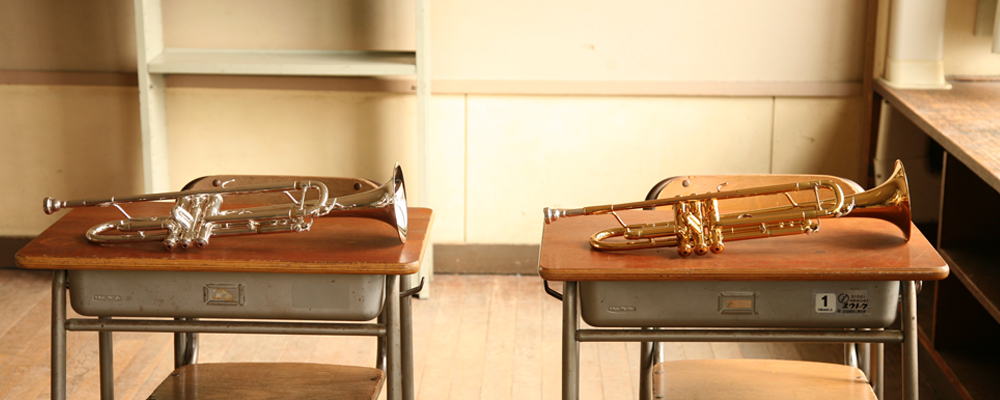Choosing a Trumpet
Choosing on the basis of the material and the coating
Timbre will vary with the quality of the material
The timbre of a wind instrument is determined by the way in which the air inside it vibrates. Hence, the timbre depends not only on the shape of the instrument and the length of its tube but also to a subtler degree on the quality of the material of the vibrating tube.
The varying composition of brass
Brass is the most commonly used material for making "brass" instruments such as the trumpet. Brass is an alloy of copper and zinc and has long been used as the material for brass instruments, as it is easy to work with, resistant to rusting, and beautiful to look at.
The timbre of an instrument depends on the ratio of copper and zinc used, and instrument makers have taken advantage of this to produce instruments with a variety of different sounds. Yellow brass, which consists of 70% copper and 30% zinc, produces a bright, forceful timbre, while gold brass, which consists of 85% copper and 15% zinc, produces a rich, expansive timbre.

Ratios of copper and zinc used in yellow brass and gold brass
Deep, sonorous nickel-silver instruments
Nickel can be added to copper and zinc to produce nickel-silver-a whitish, shiny alloy. Nickel-silver offers better rust-resistance than brass and produces a deep, sonorous sound.

The ratio of copper, nickel, and zinc in nickel silver
The coating also affects the timbre
Essentially, the lacquer coating or plating applied to the surface of the body of an instrument is intended to protect it from rust and dirt. However, coating and plating will also subtly affect the timbre of the instrument.
| Types of lacquer | Properties |
|---|---|
| Gold lacquer | Sharp, powerful sound |
| Clear lacquer | Solid, mellow sound Strong sounds are produced clearly |
| Gold plate | Gentle, yet comparatively noticeable sound More mellow than sound produced with silver plate |
| Silver plate | Gentle, cheerful sound Characteristics of the instrument are expressed directly, producing finer nuances. |
Musical Instrument Guide:Trumpet Contents
Structure
How the Instrument is Made
Choosing an Instrument
Care and Maintenance
Trivia
- Trumpeters in Bach's time alternated between instruments with a variety of ranges when performing
- The keyed trumpet-the fruit of the evolutionary process
- Famous trumpet works - Concertos, part 1
- Famous trumpet works - Concertos, part 2
- Famous trumpet works - Solos
- Is a Flugelhorn a horn? Or a trumpet?
- The highest note a trumpet can produce
- Aida trumpets for the "Grand March"
- The secret of the trumpet's traditional tone: small impurities!?

